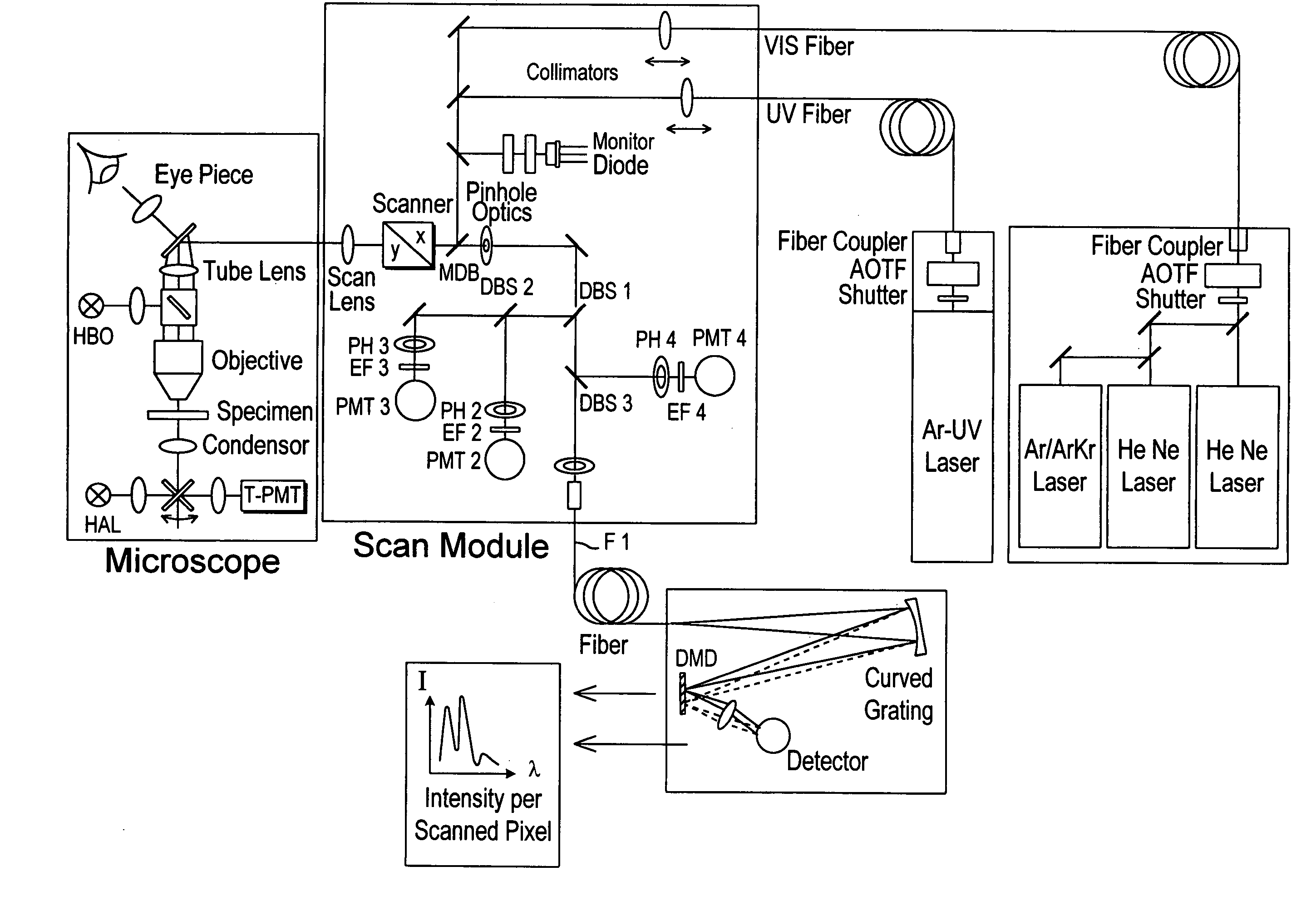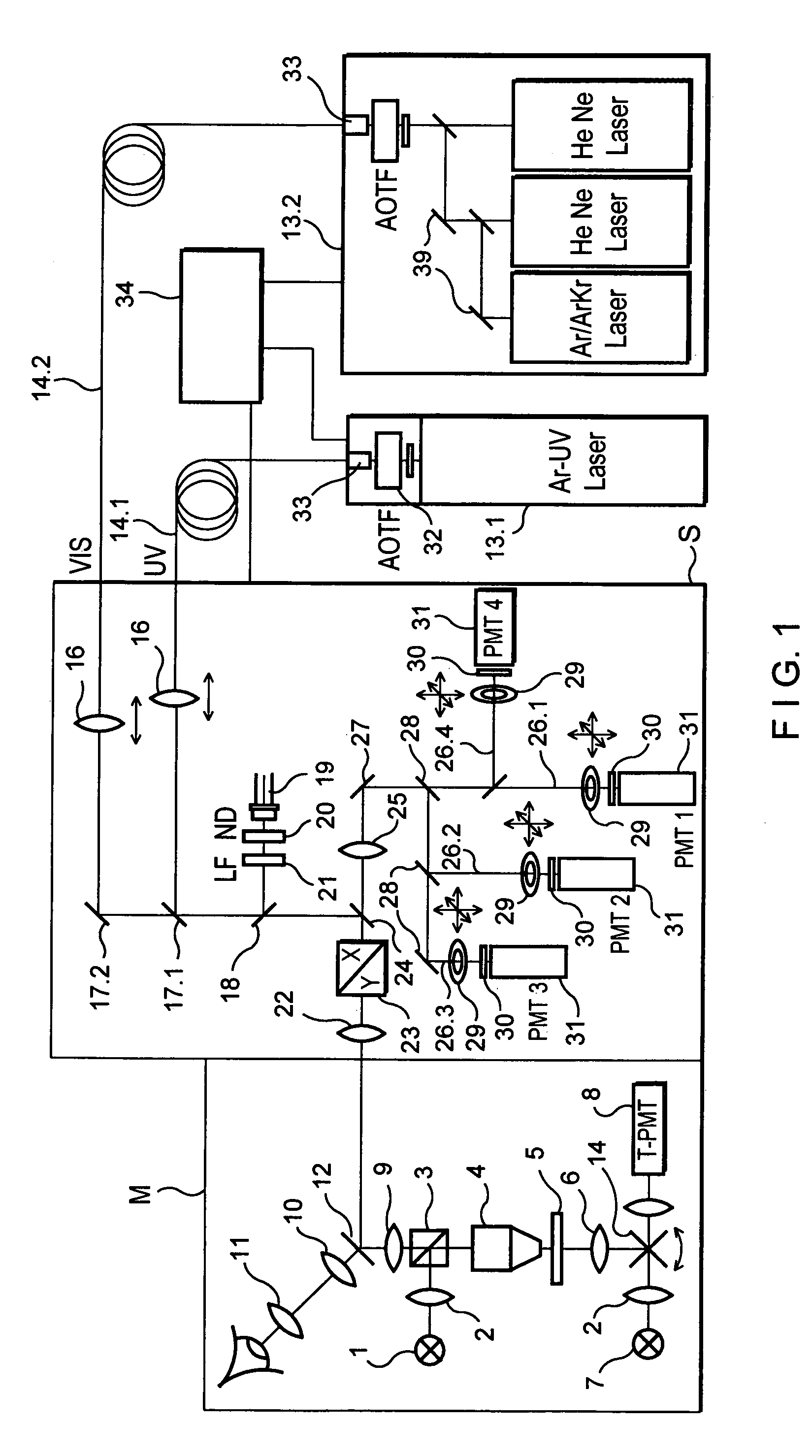Arrangement for illumination and/or detection in a microscope
a microscope and arrangement technology, applied in the field of laser scanning microscopes, can solve the problem that the arrangement is not flexible enough to be adapted to the specimen spectrum, and achieve the effects of improving the spatial resolution of the entire microscope system, compact system construction, and improving beam quality
- Summary
- Abstract
- Description
- Claims
- Application Information
AI Technical Summary
Benefits of technology
Problems solved by technology
Method used
Image
Examples
Embodiment Construction
[0034]FIG. 1 shows schematically a microscope unit M and a scan head S which have a common optical interface via an intermediate image and form an LSM.
[0035]The scan head S can be mounted on the phototube of an upright microscope as well as on a lateral output of an inverse microscope.
[0036]The drawings show a microscope beam path which is switchable between incident light scanning and transmitted light scanning by means of a swivelable mirror 14, with a light source 1, illumination optics 2, beam splitter 3, objective 4, specimen stage 5, condenser 6, light source 7, receiver arrangement 8, a tube lens 9, an observation beam path with a tube lens 10 and an eyepiece 11, and a beam splitter / mirror 12 for coupling in the scanning beam. A laser module 13.1, 13.2 holds the laser and is connected via monomode light-conducting fibers 14.1, 14.2 with the laser input coupling unit of the scan head S.
[0037]The coupling of radiation into the light-conducting fibers 14.1, 14.2 is carried out b...
PUM
 Login to View More
Login to View More Abstract
Description
Claims
Application Information
 Login to View More
Login to View More - R&D
- Intellectual Property
- Life Sciences
- Materials
- Tech Scout
- Unparalleled Data Quality
- Higher Quality Content
- 60% Fewer Hallucinations
Browse by: Latest US Patents, China's latest patents, Technical Efficacy Thesaurus, Application Domain, Technology Topic, Popular Technical Reports.
© 2025 PatSnap. All rights reserved.Legal|Privacy policy|Modern Slavery Act Transparency Statement|Sitemap|About US| Contact US: help@patsnap.com



